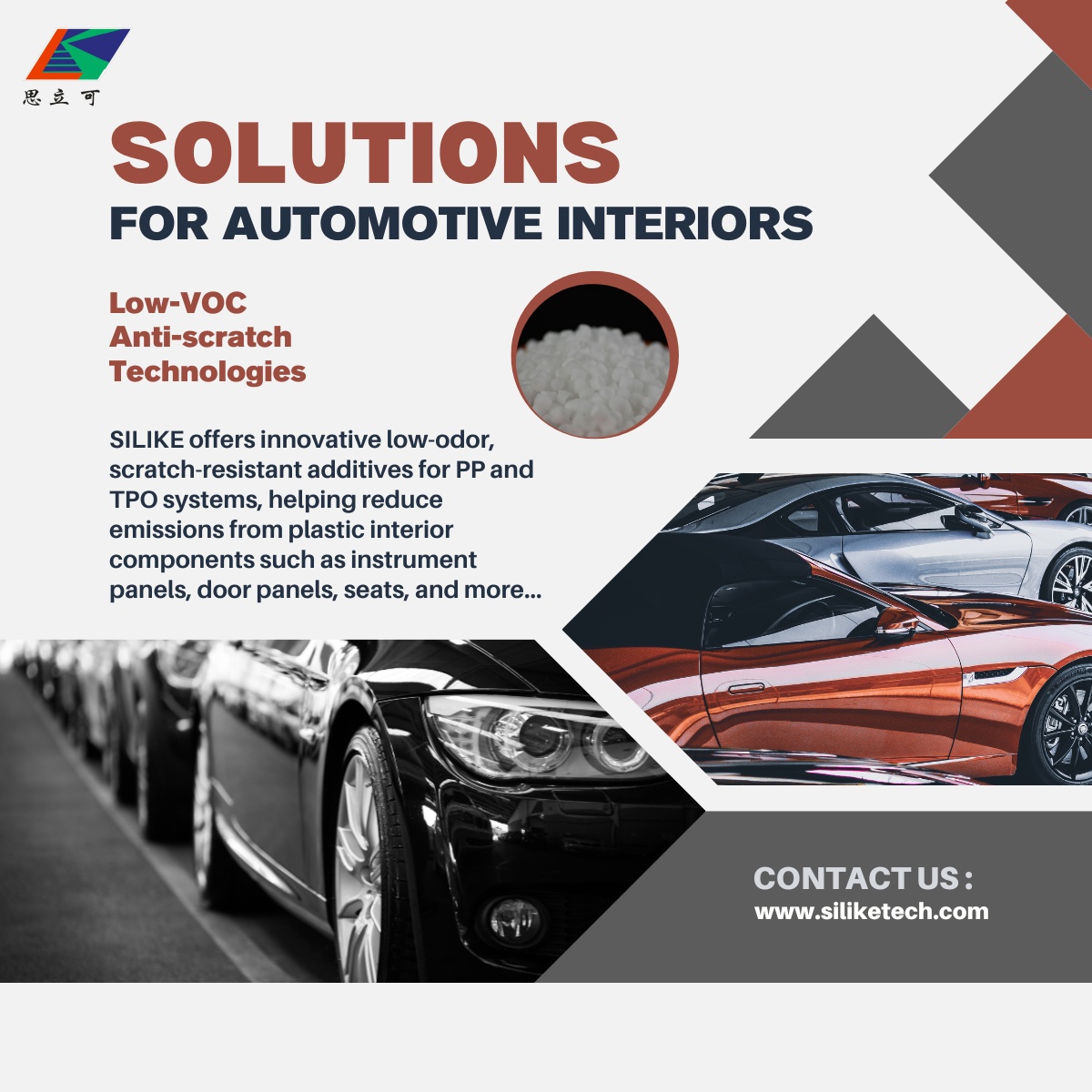The Source and Impact of VOCs in Automotive Interiors
Volatile organic compounds (VOCs) in automotive interiors primarily originate from the materials themselves (such as plastics, rubber, leather, foam, fabrics), adhesives,
paints and coatings, as well as improper manufacturing processes. These VOCs include benzene, toluene, xylene, formaldehyde, etc., and long-term exposure may cause
harm to human health, such as headaches, nausea, liver and kidney damage, and even cancer. At the same time, VOCs are also the main cause of unpleasant odors in cars,
severely affecting the driving experience.
Industry-Proven VOC Control Strategies
To reduce VOC emissions in vehicle interiors, manufacturers are adopting a range of control measures:
1. Source Control: Selecting low-odor, environmentally friendly materials from the design stage onward.
2. Material Optimization: Using low-VOC PC/ABS, TPO, or PU-based interior polymers.
3. Process Improvements: Controlling extrusion and molding conditions while applying vacuum devolatilization or thermal desorption.
4. Post-treatment: Utilizing adsorbents or biological purification technologies to eliminate residual VOCs.
But while these strategies help, they often compromise performance—especially when it comes to scratch resistance or surface appearance.
How to create Modern automotive interiors demands solutions that simultaneously increase durability, maintain aesthetics, and minimize emissions?
The Solution: Silicone-Based Additive Technologies
Modern automotive interiors demand materials that not only comply with low-VOC standards but also deliver excellent scratch resistance, surface feel, and long-term durability.
One of the effective and scalable solutions is the use of silicone-based masterbatch additives, specifically formulated for polyolefins (PP, TPO, TPE) and engineering plastics (PC/ABS, PBT).
Why Silicone-Based Additives? Characteristics and Advantages of Silicone Additives
Silicone additives are typically ultra-high molecular weight organosilicones with special functional groups. Their main chain is an inorganic silicon-oxygen structure,
and the side chains are organic groups. This unique structure gives silicone additives the following advantages:
1. Low Surface Energy: The low surface energy of silicones allows them to migrate to the material surface during melt processing, forming a lubricating film that reduces the coefficient of friction and improves the material’s slipperiness.
2. Excellent Compatibility: Through the design of special functional groups, silicone additives can achieve good compatibility with PP and TPO base materials, ensuring uniform dispersion in the material and preventing precipitation and stickiness.
3. Long-lasting Scratch Resistance: The network structure formed by silicone on the material surface, combined with the entanglement of ultra-high molecular weight macromolecules and the anchoring effect of functional groups, can provide excellent and long-lasting scratch resistance to the material.
4. Low VOC Emissions: High molecular weight silicone additives are not easily volatile, which helps to improve the air quality inside the car from the source, meeting low-VOC requirements.
5. Improved Processing Performance: Silicone additives can improve the processing and flowability of resins, including better mold filling, smaller extruder torque, internal lubrication, demolding, and faster production speeds.
6. Improved Surface Finish and Haptics: The presence of silicone can improve the surface finish and haptic properties of injection molded product.
Introducing SILIKE’s Scratch-Resistant Technologies and Silicone-Based Additive
LYSI-906 is an innovative anti-scratch masterbatch designed specifically for long-lasting scratch resistance of automotive interior applications. It contains 50% ultra-high molecular weight siloxane dispersed in polypropylene (PP), making it ideal for PP, TPO, TPV, and talc-filled systems.
Typical application: PP/TPO/TPV automotive interior parts
Adding 1.5~3% anti-scratch silicone agent to the PP/TPO system, the scratch resistance test can be passed, meeting VW’s PV3952, GM’s GMW14688 standards. Under the pressure of 10 N, the ΔL can achieve <1.5. No stickiness and low VOCs.
Key Benefits of Anti-scratch Agent LYSI-906 for Automotive Interior Materials at a Glance:
1. Long-term Scratch Resistance: Improves surface durability across door panels, dashboards, center consoles, and more.
2. Permanent Slip Enhancer.
3. No Surface Migration: Prevents blooming, residue, or stickiness—maintains clean matte or glossy surfaces.
4. Low VOC & Odor: Formulated with minimal volatile content to comply with GMW15634-2014.
5. No stickiness after accelerated aging tests and natural climate exposure tests.
Not Just for Automotive: Broader Applications
SILIKE’s anti-scratch silicone additives are also suitable for home appliance surfaces, furniture parts, and hybrid plastic interiors using PC/ABS or PBT—ensuring uniform scratch resistance across different substrates.
Whether you’re formulating for next-gen vehicles or seeking to improve in-cabin quality, SILIKE’s LYSI- scratch-resistant agent 906 and silicone additive solutions offer a reliable path to low-VOC, high-performance interiors.
Contact the SILIKE team to request anti-scratch additives for PP and TPO samples, silicone masterbatch for interior plastics, technical datasheets, or expert formulation support for VOC-compliant automotive additives. Let’s create cleaner, more durable, and sensory-refined interiors—together.
Post time: Jul-18-2025






